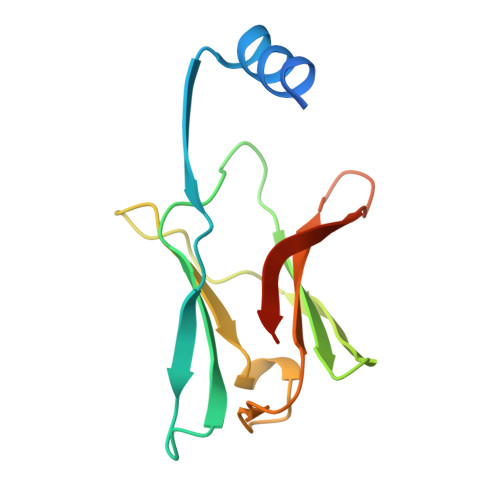Glycosylation Contributes to Thermostability and Proteolytic Resistance of rFIP-nha ( Nectria haematococca ).
Liu, Y., Hoppenbrouwers, T., Wang, Y., Xie, Y., Wei, X., Zhang, H., Du, G., Imam, K.M.S.U., Wichers, H., Li, Z., Bastiaan-Net, S.(2023) Molecules 28
- PubMed: 37687215
- DOI: https://doi.org/10.3390/molecules28176386
- Primary Citation of Related Structures:
8GO5, 8GO6, 8GO7 - PubMed Abstract:
Glycosylation is an important post-translational modification of proteins, contributing to protein function, stability and subcellular localization. Fungal immunomodulatory proteins (FIPs) are a group of small proteins with notable immunomodulatory activity, some of which are glycoproteins. In this study, the impact of glycosylation on the bioactivity and biochemical characteristics of FIP-nha (from Nectria haematococca ) is described. Three rFIP-nha glycan mutants (N5A, N39A, N5+39A) were constructed and expressed in Pichia pastoris to study the functionality of the specific N-glycosylation on amino acid N5 and N39. Their protein characteristics, structure, stability and activity were tested. WT and mutants all formed tetramers, with no obvious difference in crystal structures. Their melting temperatures were 82.2 °C (WT), 81.4 °C (N5A), 80.7 °C (N39A) and 80.1 °C (N5+39A), indicating that glycosylation improves thermostability of rFIP-nha. Digestion assays showed that glycosylation on either site improved pepsin resistance, while 39N-glycosylation was important for trypsin resistance. Based on the 3D structure and analysis of enzyme cleavage sites, we conclude that glycosylation might interfere with hydrolysis via increasing steric hindrance. WT and mutants exerted similar bioactivity on tumor cell metabolism and red blood cells hemagglutination. Taken together, these findings indicate that glycosylation of FIP-nha impacts its thermostability and digestion resistance.
- Laboratory of Biomanufacturing and Food Engineering, Institute of Food Science and Technology, Chinese Academy of Agriculture Sciences, Beijing 100193, China.
Organizational Affiliation:
















